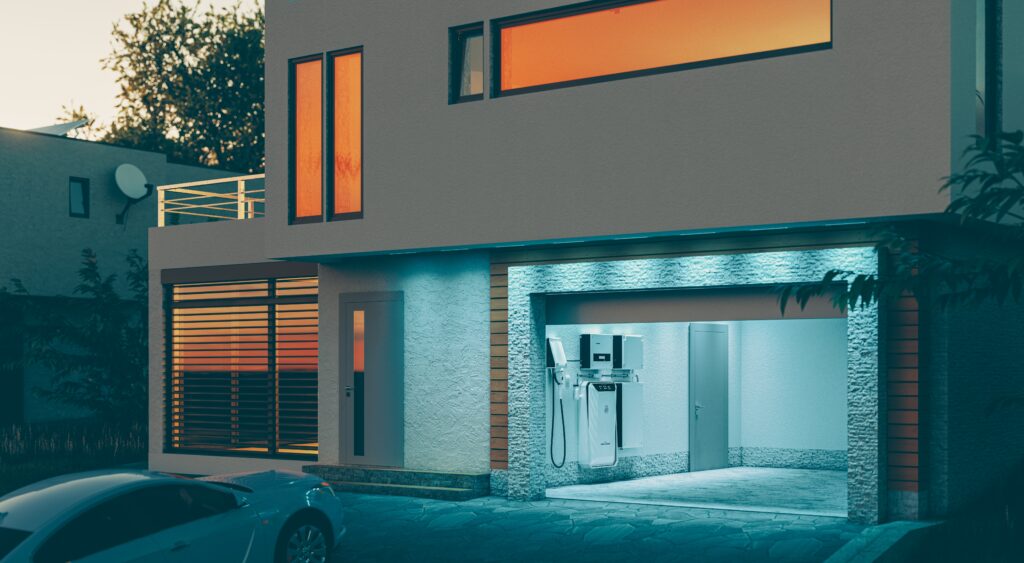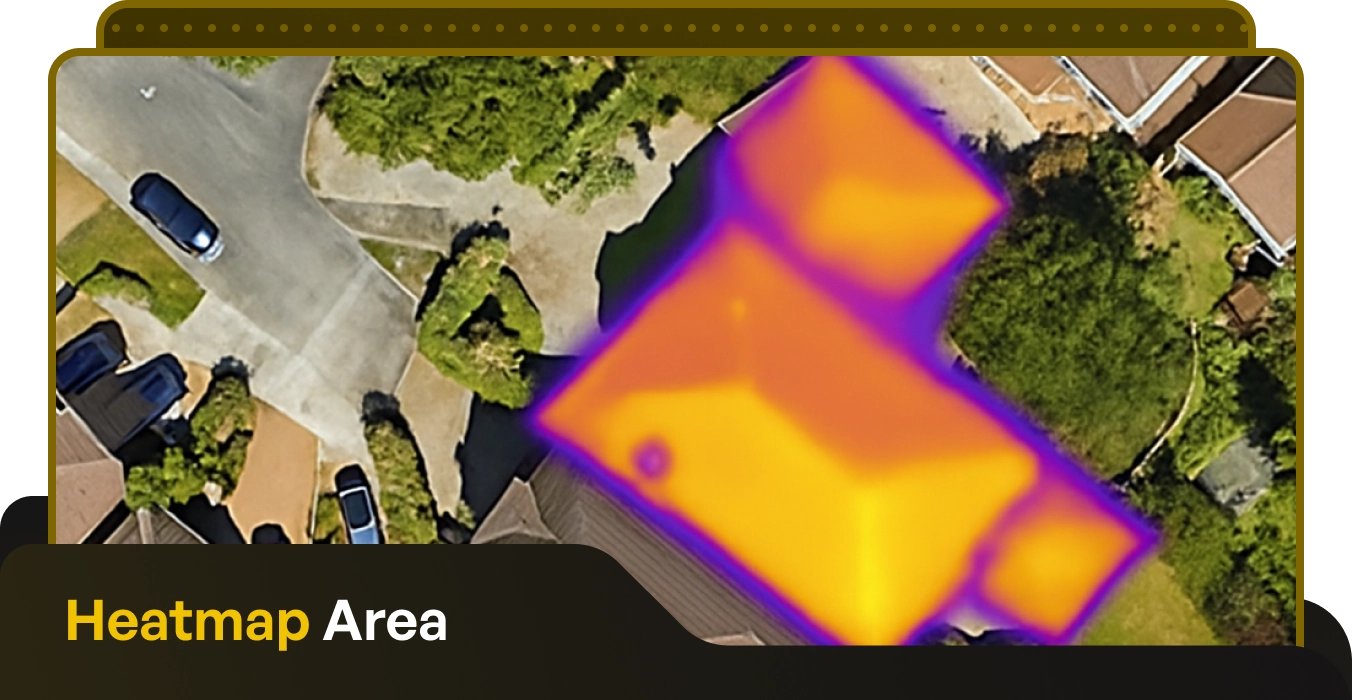What Size Solar Battery Do You Need?

Written by: Briain Kelly
Published: July 24, 2025
Last updated: October 8, 2025
Reading time: 4 mins
Adding solar battery storage to your home alongside solar panels can be an excellent investment.
It allows you to increase your savings by using more of the electricity generated by home solar panels that would otherwise be sent back to the grid.
But there are many different types and sizes of solar batteries on the market. Given their still-high price, it is essential to ensure that you purchase the right-sized solar battery for your home.
Understanding Solar Battery Capacity
When you talk about the size of a solar battery, it typically means its capacity, not its physical dimensions.
The capacity of a battery storage system is measured in kilowatt hours (kWh). One kWh of stored energy can provide 1,000W of electricity for one hour.
There are three terms used when describing the capacity of a solar battery system, including how much power it can hold in total, and how much can be used.
- Total Energy Capacity (kWh): The total or nominal capacity of a battery is the technical maximum storage capacity.
- Usable Energy Capacity (kWh): The usable capacity is a description of how much energy in the battery is actually available to the user.
- Depth of Discharge (%): Measures how much of a battery’s capacity can be used without damaging its lifespan. Usually around 90% on modern batteries.
These three terms can be used interchangeably by different battery manufacturers. The usable capacity is typically measured as depth of discharge of the total capacity.
What capacities do solar batteries come in?
Home storage batteries come in a variety of capacities depending on the manufacturer and model.
The most common starting point for solar batteries currently is 5kWh in capacity, with most homeowners who get a solar battery opting for a single one of those.
You can, however, find a battery of any capacity if you are willing to go through different brands.
Along with this, battery capacities have changed significantly in recent years, and may continue to improve alongside new technologies.
Factors Affecting Solar Battery Requirements
The factors which can govern what size solar battery system is needed for your home include:
- Battery Usable Capacity: How much usable electricity does the battery have in kWh
- Battery Power Rating: How much power the battery can deliver at any moment.
- Solar PV System Size: What is the power output of your home solar panels?
- Electricity Usage: How much electricity is used during the day and at what time?
- Electricity Prices: Will you be charging the battery at night with lower prices?
- Battery Usage: What are your goals for how this battery is to be used?
Storing Surplus Solar Power
The main reason why people get a solar battery is to store any excess power generated by the solar panels.
When solar panels are at their most productive, they can be producing more electricity than is being used in the home. This stored power can then be used later in the day when they have slowed or stopped making power.
The size of the battery you will need in this case depends on the number of solar panels on your home and how much electricity you use in the day.
You Hoursehold Electricity Usage
The average household in Ireland uses 4,200kWh of electricity in a year according to the CRU. This works out at roughly 11.5kWh of electricity per day.
In reality that will change depending on the time of year, with far greater consumption in Winter. On top of that, smaller households may use less than average, and larger ones far more.
That gives use a range of roughly 7kWh to 22kWh for daily electricity usage.
However, what’s more important to understand is when you are using the most power during the day.
If your house is empty for a large part of the day, then more solar power will be unused than if there are multiple people at home during the day.
| No. of Solar Panels | Average Peak Daily Output | Percentage of Solar Power Used | Battery Size Needed |
|---|---|---|---|
| 4.4kWp / 10 panels | 10.1kWh | 20% | 8kWh |
| 40% | 6kWh | ||
| 60% | 4kWh | ||
| 5.28kWp / 12 panels | 12.3kWh | 20% | 10kWh |
| 40% | 7kWh | ||
| 60% | 5kWh | ||
| 6.16kWp / 14 panels | 14.5kWh | 20% | 12kWh |
| 40% | 9kWh | ||
| 60% | 6kWh | ||
| 7.04kWp / 16 panels | 16.7kWh | 20% | 13kWh |
| 40% | 10kWh | ||
| 60% | 7kWh |
Smart Meter Data for Electricity Usage
We can talk all day about averages and giving estimates, but the best way to understand your electricity usage is to download your smart meter data.
This will tell you exactly how much electricity you use, and at what time of day your consumption is greatest.
Using this will give you a much clearer picture of how much solar power you have to spare, and what size battery is best.
Night Time Battery Charging
A larger solar battery system can be used to maximise the financial gains which come from cheaper electricity at night. This is especially true with extremely low electricity rates in EV plans.
With prices in the region of 5c – 10c per kWh, electricity plans aimed at electric car owners also allow batteries to be charged extremely cheaply for anywhere from 2 to 4 hours in the night.
Since most batteries can be charged in 1 – 2 hours with a constant flow of electricity, a larger battery storage system will be able to store enough electricity for most or all of the following day.
Expanding Your Solar Battery Storage
The vast majority of domestic solar battery storage systems allow for multiple modules to be connected in series.
Some, such as the Huawei Luna or Sigenergy SigenStor are designed with a simple plug-and-go system. This allows a number of battery modules to be easily stacked on top of one another with a module controlling the entire stack.
This system allows your battery storage capacity to be easily expanded without needing much additional work.
However, battery systems cannot be expanded endlessly. Check how many battery modules can operate together when buying your battery.
If you have doubts about how much battery capacity you need, it might be best to start with a single module and build on that as needed. This way you won’t ever spend money on more storage space than you need.

Can you get batteries from different brands
Solar batteries operating in parallel are frequently locked to only work with the same specific brand or model. So you should also take that into consideration before buying a battery if you are planning to expand later.
Going Off-Grid with Solar Batteries
If you want to go entirely off-grid, then you will need substantially more solar battery storage compared with homes connected to the grid.
Consider getting a total battery storage capacity of at least 2x your daily electricity consumption. This is necessary to account for times when renewable energy systems are not operating at full capacity.
That said, you will also need to pair this with a much larger solar panel system, and probably a small wind turbine as well, to cover multiple bases.
With off-grid living via renewable energy so dependent on external factors, it is difficult to estimate how much storage capacity will be needed.
Using a Battery to Charge an Electric Car
It is possible to use a home storage battery to charge your electric vehicle, but the value you would get from doing so is questionable.
Any electric car is likely to have a battery with a far greater capacity than your home storage battery. The average size of an electric car battery now can be anywhere from 55kWh to 85kWh, with some having even greater capacity.
This means that your battery is only likely to be able to charge a small portion of your EV battery even if using all of its power.
It makes more sense to use a battery to power your home, while any EV charging done at night should be with a discounted electricity plan meant specifically for this.
In addition, if you are charging your car during the day, the majority of EV chargers can draw power directly from solar panels, bypassing the need for a battery altogether.
What Size Solar Battery Do You Need?
Published: July 24, 2025
Last updated: October 8, 2025

Written by: Briain Kelly
Reading time: 4mins
Adding solar battery storage to your home alongside solar panels can be an excellent investment.
It allows you to increase your savings by using more of the electricity generated by home solar panels that would otherwise be sent back to the grid.
But there are many different types and sizes of solar batteries on the market. Given their still-high price, it is essential to ensure that you purchase the right-sized solar battery for your home.
Understanding Solar Battery Capacity
When you talk about the size of a solar battery, it typically means its capacity, not its physical dimensions.
The capacity of a battery storage system is measured in kilowatt hours (kWh). One kWh of stored energy can provide 1,000W of electricity for one hour.
There are three terms used when describing the capacity of a solar battery system, including how much power it can hold in total, and how much can be used.
- Total Energy Capacity (kWh): The total or nominal capacity of a battery is the technical maximum storage capacity.
- Usable Energy Capacity (kWh): The usable capacity is a description of how much energy in the battery is actually available to the user.
- Depth of Discharge (%): Measures how much of a battery’s capacity can be used without damaging its lifespan. Usually around 90% on modern batteries.
These three terms can be used interchangeably by different battery manufacturers. The usable capacity is typically measured as depth of discharge of the total capacity.
What capacities do solar batteries come in?
Home storage batteries come in a variety of capacities depending on the manufacturer and model.
The most common starting point for solar batteries currently is 5kWh in capacity, with most homeowners who get a solar battery opting for a single one of those.
You can, however, find a battery of any capacity if you are willing to go through different brands.
Along with this, battery capacities have changed significantly in recent years, and may continue to improve alongside new technologies.
Factors Affecting Solar Battery Requirements
The factors which can govern what size solar battery system is needed for your home include:
- Battery Usable Capacity: How much usable electricity does the battery have in kWh
- Battery Power Rating: How much power the battery can deliver at any moment.
- Solar PV System Size: What is the power output of your home solar panels?
- Electricity Usage: How much electricity is used during the day and at what time?
- Electricity Prices: Will you be charging the battery at night with lower prices?
- Battery Usage: What are your goals for how this battery is to be used?
Storing Surplus Solar Power
The main reason why people get a solar battery is to store any excess power generated by the solar panels.
When solar panels are at their most productive, they can be producing more electricity than is being used in the home. This stored power can then be used later in the day when they have slowed or stopped making power.
The size of the battery you will need in this case depends on the number of solar panels on your home and how much electricity you use in the day.
You Hoursehold Electricity Usage
The average household in Ireland uses 4,200kWh of electricity in a year according to the CRU. This works out at roughly 11.5kWh of electricity per day.
In reality that will change depending on the time of year, with far greater consumption in Winter. On top of that, smaller households may use less than average, and larger ones far more.
That gives use a range of roughly 7kWh to 22kWh for daily electricity usage.
However, what’s more important to understand is when you are using the most power during the day.
If your house is empty for a large part of the day, then more solar power will be unused than if there are multiple people at home during the day.
| No. of Solar Panels | Average Peak Daily Output | Percentage of Solar Power Used | Battery Size Needed |
|---|---|---|---|
| 4.4kWp / 10 panels | 10.1kWh | 20% | 8kWh |
| 40% | 6kWh | ||
| 60% | 4kWh | ||
| 5.28kWp / 12 panels | 12.3kWh | 20% | 10kWh |
| 40% | 7kWh | ||
| 60% | 5kWh | ||
| 6.16kWp / 14 panels | 14.5kWh | 20% | 12kWh |
| 40% | 9kWh | ||
| 60% | 6kWh | ||
| 7.04kWp / 16 panels | 16.7kWh | 20% | 13kWh |
| 40% | 10kWh | ||
| 60% | 7kWh |
Smart Meter Data for Electricity Usage
We can talk all day about averages and giving estimates, but the best way to understand your electricity usage is to download your smart meter data.
This will tell you exactly how much electricity you use, and at what time of day your consumption is greatest.
Using this will give you a much clearer picture of how much solar power you have to spare, and what size battery is best.
Night Time Battery Charging
A larger solar battery system can be used to maximise the financial gains which come from cheaper electricity at night. This is especially true with extremely low electricity rates in EV plans.
With prices in the region of 5c – 10c per kWh, electricity plans aimed at electric car owners also allow batteries to be charged extremely cheaply for anywhere from 2 to 4 hours in the night.
Since most batteries can be charged in 1 – 2 hours with a constant flow of electricity, a larger battery storage system will be able to store enough electricity for most or all of the following day.
Expanding Your Solar Battery Storage
The vast majority of domestic solar battery storage systems allow for multiple modules to be connected in series.
Some, such as the Huawei Luna or Sigenergy SigenStor are designed with a simple plug-and-go system. This allows a number of battery modules to be easily stacked on top of one another with a module controlling the entire stack.
This system allows your battery storage capacity to be easily expanded without needing much additional work.
However, battery systems cannot be expanded endlessly. Check how many battery modules can operate together when buying your battery.
If you have doubts about how much battery capacity you need, it might be best to start with a single module and build on that as needed. This way you won’t ever spend money on more storage space than you need.

Can you get batteries from different brands
Solar batteries operating in parallel are frequently locked to only work with the same specific brand or model. So you should also take that into consideration before buying a battery if you are planning to expand later.
Going Off-Grid with Solar Batteries
If you want to go entirely off-grid, then you will need substantially more solar battery storage compared with homes connected to the grid.
Consider getting a total battery storage capacity of at least 2x your daily electricity consumption. This is necessary to account for times when renewable energy systems are not operating at full capacity.
That said, you will also need to pair this with a much larger solar panel system, and probably a small wind turbine as well, to cover multiple bases.
With off-grid living via renewable energy so dependent on external factors, it is difficult to estimate how much storage capacity will be needed.
Using a Battery to Charge an Electric Car
It is possible to use a home storage battery to charge your electric vehicle, but the value you would get from doing so is questionable.
Any electric car is likely to have a battery with a far greater capacity than your home storage battery. The average size of an electric car battery now can be anywhere from 55kWh to 85kWh, with some having even greater capacity.
This means that your battery is only likely to be able to charge a small portion of your EV battery even if using all of its power.
It makes more sense to use a battery to power your home, while any EV charging done at night should be with a discounted electricity plan meant specifically for this.
In addition, if you are charging your car during the day, the majority of EV chargers can draw power directly from solar panels, bypassing the need for a battery altogether.
Solar Energy Saves Households Thousands in Electricity Costs
Take our 2-minute questionnaire and find affordable solar options to suit your budget and lifestyle.



